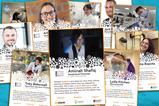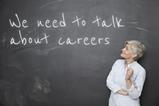Best practice guidance recommends linking curriculum topics to careers. Here’s a way that doesn’t take up valuable time
In 2014, the Gatsby Charitable Foundation published Good career guidance, which recommended benchmarks found in good careers provision across the world. These benchmarks help schools and colleges to audit their careers provision, and to improve the support offered to learners.
The fourth benchmark recommends ‘All teachers should link curriculum learning to careers’. In other words, subject teachers should consider how they can link what they are teaching to careers.
As a subject teacher, you might feel there is already too much to fit in, and adding careers will overload an already packed schedule. However, it is possible to ‘drip feed’ some careers ideas into lessons without much additional work, and in a way that will help students to consolidate their understanding of a science topic, and to make links between the topic and career contexts. This idea works equally well at the beginning or end of a lesson.
Picture prompts

Have a look at the picture of some bridges over the River Tyne.
Ask yourself, ‘What links my last lesson with this picture?’ Perhaps you taught metals and non-metals; you can classify the different materials in the picture into metals and non-metals. Or, was it the water cycle? Both clouds and rivers are key elements of the water cycle. Water quality testing is relevant here too: important for improving the quality of the Tyne. Corrosion lessons could link to the need to keep the Tyne’s bridges corrosion-free. And so on …
Now consider what careers might be involved with that topic. Some possibilities are: structural engineer, materials scientist, formulation coating chemist, environmental chemist, welder, architect, accountant, and fisheries biologist.
To use this activity in class simply choose a busy picture and display it. Ask students to write down links between what they learnt last lesson (or in this lesson if you’re using this as a final lesson activity) and the picture. They may need their notes to remind themselves what they were doing last lesson, but that is helpful priming and reinforces their learning. Then ask students to identify what jobs might be involved in the picture and their link.
Finally, you can spend a few minutes talking about one or two of the jobs that link to the picture (and the subject topic they were studying). If you’re not sure what particular jobs involve, use the national careers service website job profiles, or asking your school careers leader.
In many ways, it doesn’t matter what links your students find – they will probably make links that you hadn’t even considered. It is only important that they are revisiting science topics from previous lessons, and linking the topic to a different, careers-focused context.
Carol Davenport is a senior lecturer at Northumbria University, and director of NUSTEM (nustem.uk)














No comments yet